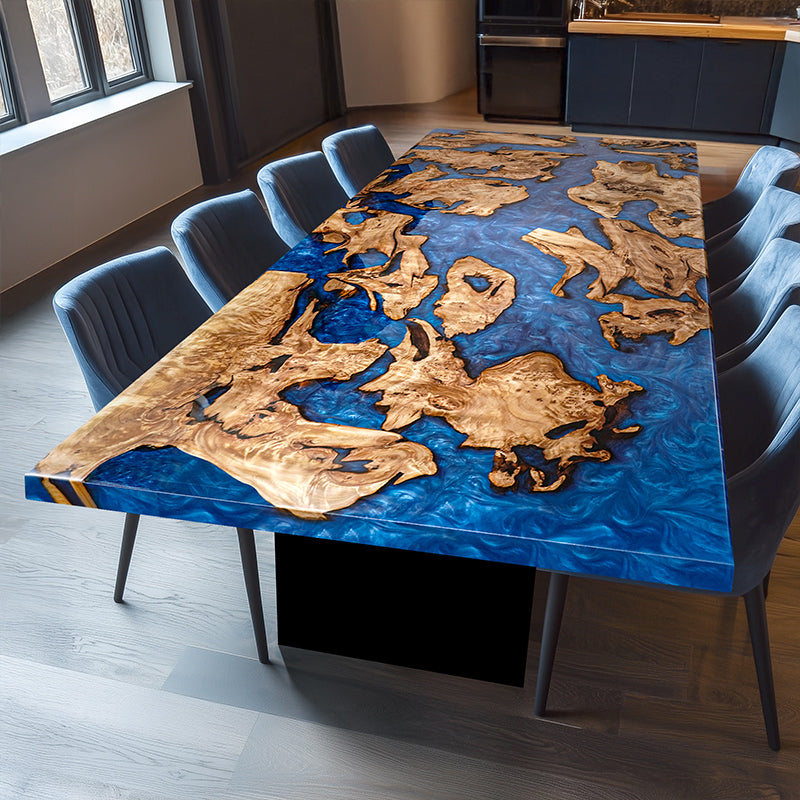Have you ever walked through a forest or admired a wooden object and marveled at those mysterious, swirling growths on trees? Those tree burls—nature’s self-healing masterpieces—are the stars of today’s epoxy resin furniture trends. Whether you’re searching for a custom resin table and unique epoxy river table, the fusion of organic imperfections and modern resin artistry creates showstopping pieces like the Elite Custom Blue Epoxy Living Room Table (ECT-100) and Elite Custom Cunninghamia Mississippi River Epoxy Resin Dining Table (ECT-63).
Tree Burls: The Art of Imperfection
A tree burl is a type of callus tissue. It's the tree's self - defense mechanism, formed through asexual cell reproduction after the tree has been injured. The swollen part on the tree caused by external trauma is what we call a tree burl (commonly known as a tree bump). There are various reasons for the formation of tree burls. Generally, they can be classified into two types: those caused by external force damage and those caused by bacterial infection. After a tree is damaged by fungi, fires, or other mechanical injuries, dormant buds gather to form a burl. That's why they only appear on "imperfect wood."
Due to differences in vessel cells, grain patterns, growth rings, axial parenchyma, and pigments, tree burls exhibit a wide variety of unique patterns. And depending on the growth environment of the tree, tree burls take on different forms.
For trees growing in open areas, the burls have more freedom to grow. The tree trunks are large and straight, and the burls form a big bulge on the trunk. With ample sunlight, the wood rays are wider. In contrast, in a crowded environment like a forest, small burls of different sizes form randomly on the tree trunk, intermingled with the tree's growth rings. When sliced, the burl patterns are curved and intertwined, and the growth ring lines blend seamlessly with the burls, becoming treasures for epoxy resin table designs. The maple tree burl is a great example of this.
Some burls even grow on the roots. Because of the specific growth environment, the patterns they produce are incredibly magnificent. The burls of Emmenopterys henryi and black walnut trees are prime representatives.
When Resin Meets Wood: Creating Masterpieces
Talented modern industrial designers are not only making our lives more comfortable and convenient but also bringing contemporary environmental protection concepts into every household. The marriage of liquid epoxy resin and live edge wood slabs transforms raw materials into functional art. Imagine a river epoxy table with glowing accents or a blue epoxy resin table that mimics ocean waves. These designs aren’t just furniture—they’re conversation starters for modern interior design enthusiasts.
 All it takes is to find a piece of wood, sand it... prepare some fluorescent resin, and fill it into the natural depressions... and just like that, a beautiful combination of nature and modern art is born.
All it takes is to find a piece of wood, sand it... prepare some fluorescent resin, and fill it into the natural depressions... and just like that, a beautiful combination of nature and modern art is born.
These creations remind you that beauty can be found in the most unexpected places, and even the "imperfections" in nature, like tree burls, can be transformed into something truly extraordinary. So, why not embrace this unique beauty and bring a touch of nature's magic into your life?


